Thukpa is a comforting Tibetan noodle soup. Here is a one pot, veg thukpa recipe to warm you up on cold days.
Estimated reading time: 6 minutes
Jump to:
The Cultural Essence of Thukpa
Thukpa, which translates to “noodle” in Tibetan, is a staple dish in the Himalayan regions, including Tibet, Nepal, Bhutan, and parts of India like Sikkim, Uttarakhand, and Arunachal Pradesh. In some regions including Nainital, we call it – Thuppa or Thupka.
In the harsh, cold climates of the Himalayas, Thukpa with meat provides the necessary warmth and sustenance. It’s often enjoyed as a hearty, one pot meal after a long day of hard work.
Thukpa is more than just food; it’s a reflection of the region’s history, climate, and way of life.
This veg Thukpa recipe from Uttarakhand is an easy, one pot version of the dish with loads of vegetables that you can easily make at home in 30 minutes.
Recipe Highlights
- vegan
- one pot meal
- easy to customize
- gets ready in 30 minutes
- wholesome and nourishing
- does not require too many ingredients
The Secret of Thukpa: Fresh Ingredients
The beauty of Thukpa lies in its simplicity and the use of fresh, wholesome ingredients.
- Noodles: Traditionally, Thukpa is made with hand-pulled noodles, but store-bought Hakka or ramen noodles can also be used. Rice noodles or egg noodles work particularly well.
- Vegetables: The veg Thukpa includes a variety of seasonal vegetables such as onion, carrots, bell peppers, cabbage, and mushrooms. These vegetables add vibrant colours and a range of textures to the soup.
- Broth: A flavoursome vegetable stock forms the base of the soup.
- Aromatics: Ginger, Garlic, Green Chilli, and Coriander Stalks are the three holy grail of veg Thukpa recipe. I highly recommend not missing out either of them.
- Seasoning: Tibetan cuisine is known for its subtle yet impactful flavours. I use medium soy sauce, black pepper, green chilli, and salt to season the thukpa.
- Fresh coriander and spring onion are two essential herbs for Thukpa.
- Proteins: While the focus here is on the vegetables, tofu can be added for an extra protein boost, making it a well-rounded meal.
How To Make Veg Thukpa
Prepare Soup Base:
- Heat oil in a large saucepan or stockpot over medium heat.
- Add the minced garlic, ginger, coriander stalks, green chilli, and onion.
- Saute for one minute or until aromatic. No need to brown them.
Cook the Noodles and Vegetables:
- Pour in the vegetable stock and bring Thukpa to a gentle boil.
- Add the noodles, julienned vegetables, shredded cabbage, salt, pepper, and soy sauce.
- Simmer over high heat till noodles are cooked and vegetables soften.
Finishing Touch:
- Add finely chopped spring onion and coriander leaves.
- Taste, and if required add more salt or soy sauce.
- Veg Thukpa is ready to serve.
Serving Suggestion
Thukpa is served piping hot then only it tastes best.
Ladle the Thukpa into bowls and add a handful of fresh coriander and green onions in each bowl. Serve it with chilli oil for that garlicky and spicy kick or a squeeze of lemon juice.
Momo – the Tibetan dumpling is one of the best side dishes to serve with Thuppa to make it a complete meal.
My Tried and True Tips
- Not too many sauces. Thukpa is not the kind of noodle soup that requires lot of processed sauces. Hence, for an authentic flavour avoid adding them. I add medium soy sauce for that delicious umami flavour.
- Without stock Thukpa will have no depth of flavour. The original recipes requires meat cooked with hand pulled noodles. Without meat, you need a flavoursome vegetable stock or broth to prepare the base of soup.
- Keep it soupy. Do not add corn starch or any other thickening agent to Thupka. It is supposed to be slurpy and soupy and rustic.
- Too much noodles. Thukpa has the perfect harmony of soup, veggies and the noodles. Hence, do not get carried away and add too much of noodles. They absorb all the soup after a few hours of cooking and you’ll end up with soup noodles not thukpa.
- Cooking noodles separately. Many Thuppa recipes suggest cooking noodles separately and then serving in the bowl. I prefer cooking them in the soup base for an additional layer of flavour and convenience.
- Not a freezer friendly meal. Thukpa is the kind of dish that tastes best fresh and hot. It doesn’t taste good after freezing or storing or reheating.
More Vegetable Soup Recipes
- Oats Soup
- Mushroom Soup
- Green Peas Soup
- Cauliflower Soup
- Minestrone Soup
- Broccoli Almond Soup
- Vegetable Barley Soup
- Tomato Couscous Soup
follow us on Youtube and Instagram for video recipes.
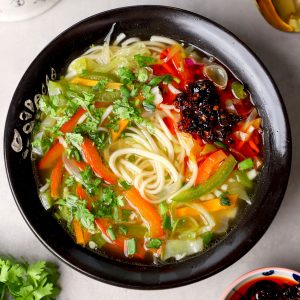
Veg Thukpa Recipe
Ingredients
- 150 gram Hakka noodles (uncooked)
- 2 tablespoon vegetable refined oil
- 1 tablespoon minced garlic
- 1 tablespoon minced ginger
- 1 tablespoon coriander stalks, finely chopped
- 1 medium size red onion, sliced
- 2 green chillies, sliced
- ½ Cup cabbage shredded
- ½ Cup thinly sliced red bell pepper
- ½ Cup thinly sliced capsicum
- ½ Cup thinly sliced carrot
- 1 tablespoon dark soy sauce
- 1 teaspoon black pepper powder
- ½ teaspoon salt or to taste
- 4 Cup vegetable stock (see recipe)
- 2 spring onion, finely chopped
- handful of fresh coriander leaves, chopped
Instructions
- Add the minced garlic, ginger, green chilli, coriander stalks, and onion. Saute for one minute or until aromatic. No need to brown them.
- Pour in the vegetable stock and bring Thukpa to a gentle boil.
- Add the noodles, julienned vegetables, shredded cabbage, salt, pepper, and soy sauce.
- Once noodles are cooked, add finely chopped spring onion and coriander leaves. Taste, and if required add more salt or soy sauce.
Recipe Notes:
- Thukpa is not the kind of noodle soup that requires lot of processed sauces. Hence, for an authentic flavour avoid adding them. I add medium soy sauce for that delicious umami flavour.
- Without stock Thukpa will have no depth of flavour.
- Keep it soupy. Do not add corn starch or any other thickening agent to Thupka. It is supposed to be slurpy and soupy and rustic.
- Too much noodles. Thukpa has the perfect harmony of soup, veggies and the noodles. Hence, do not get carried away and add too much of noodles. They absorb all the soup after a few hours of cooking and you’ll end up with soup noodles not thukpa.
- After noodles are cooked do not simmer the soup for too long. Else, it will become more thick.

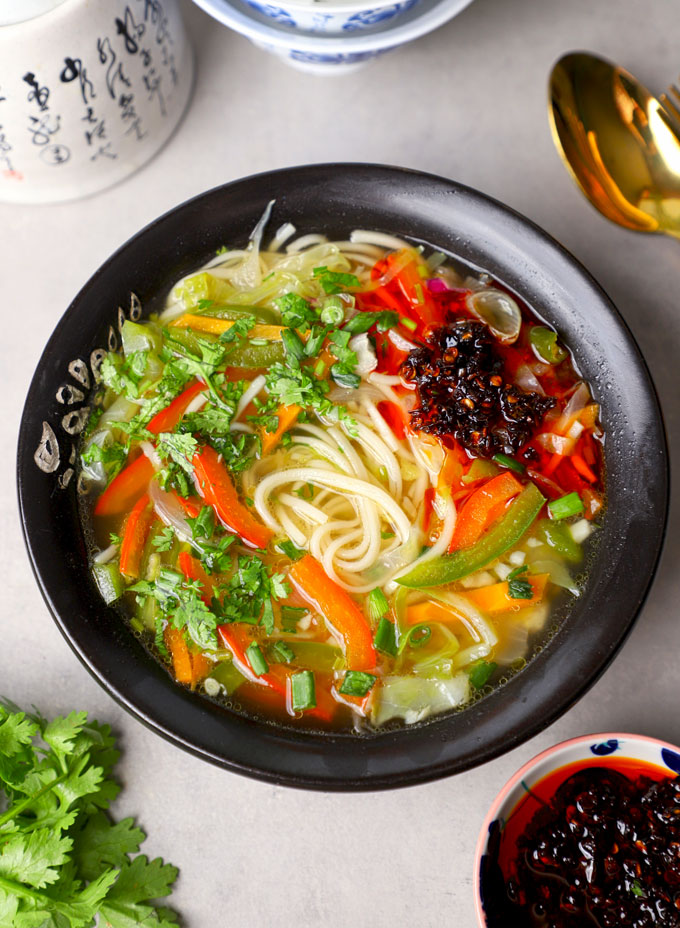
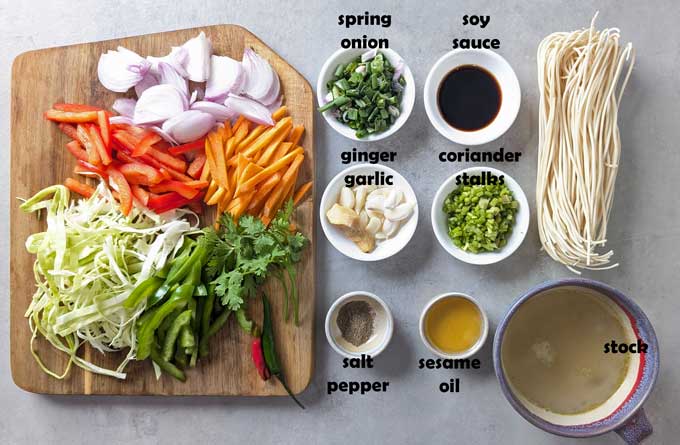
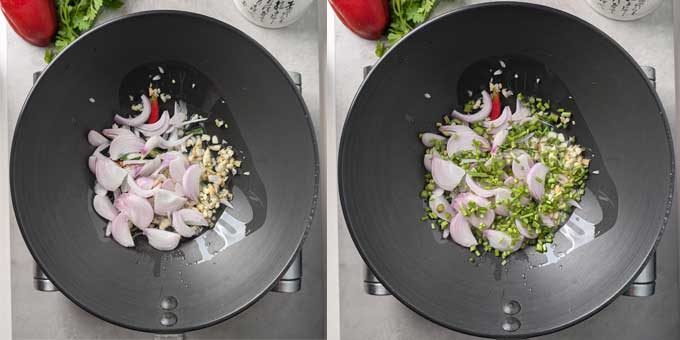
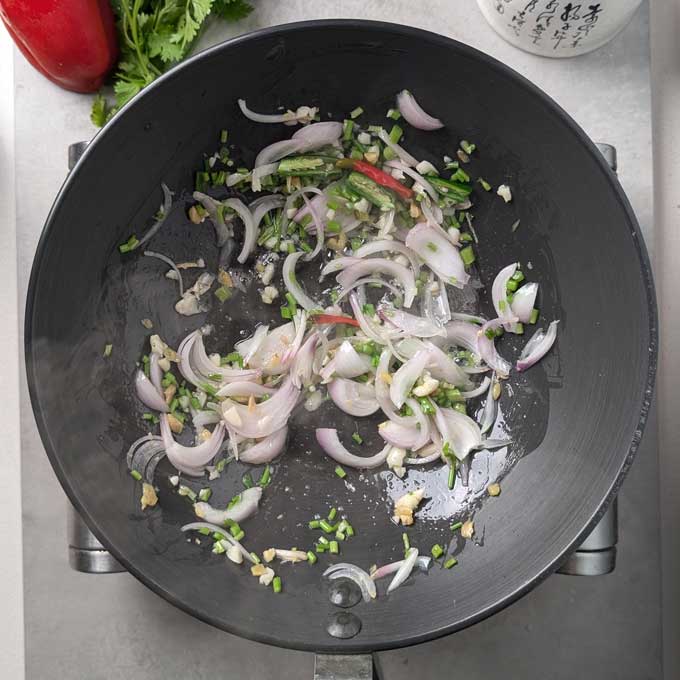
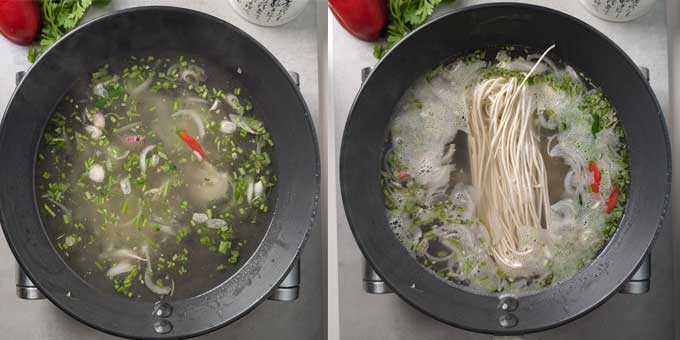
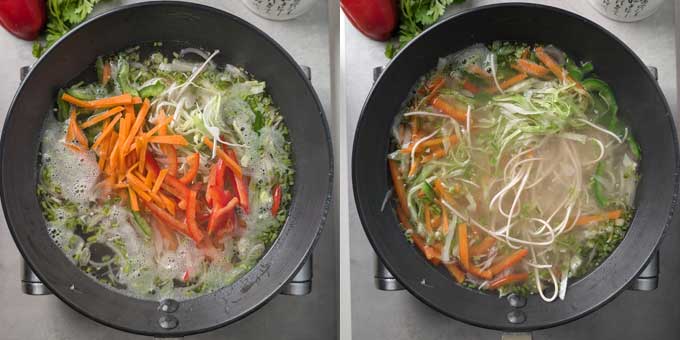
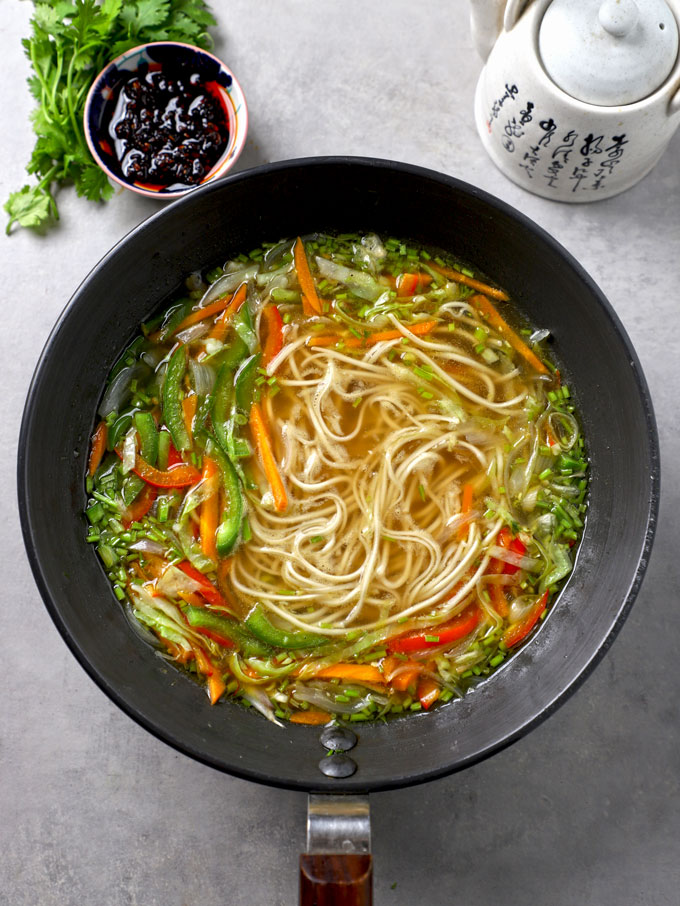
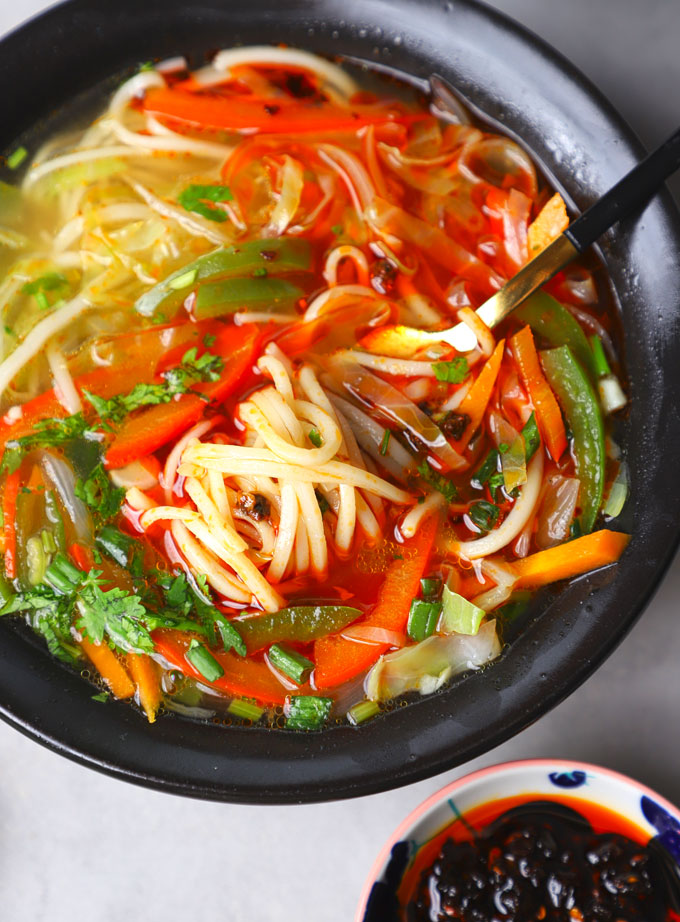
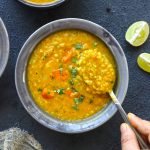
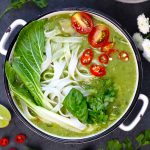
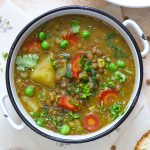
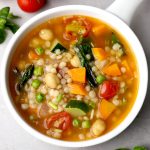
Leave Your Rating & Comment